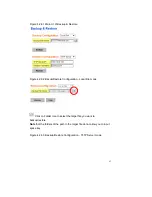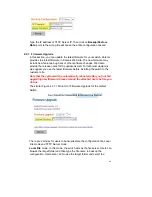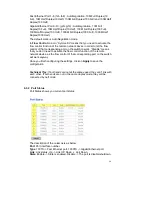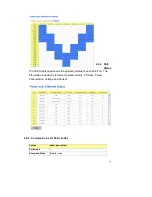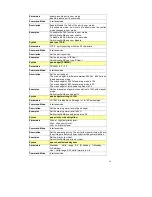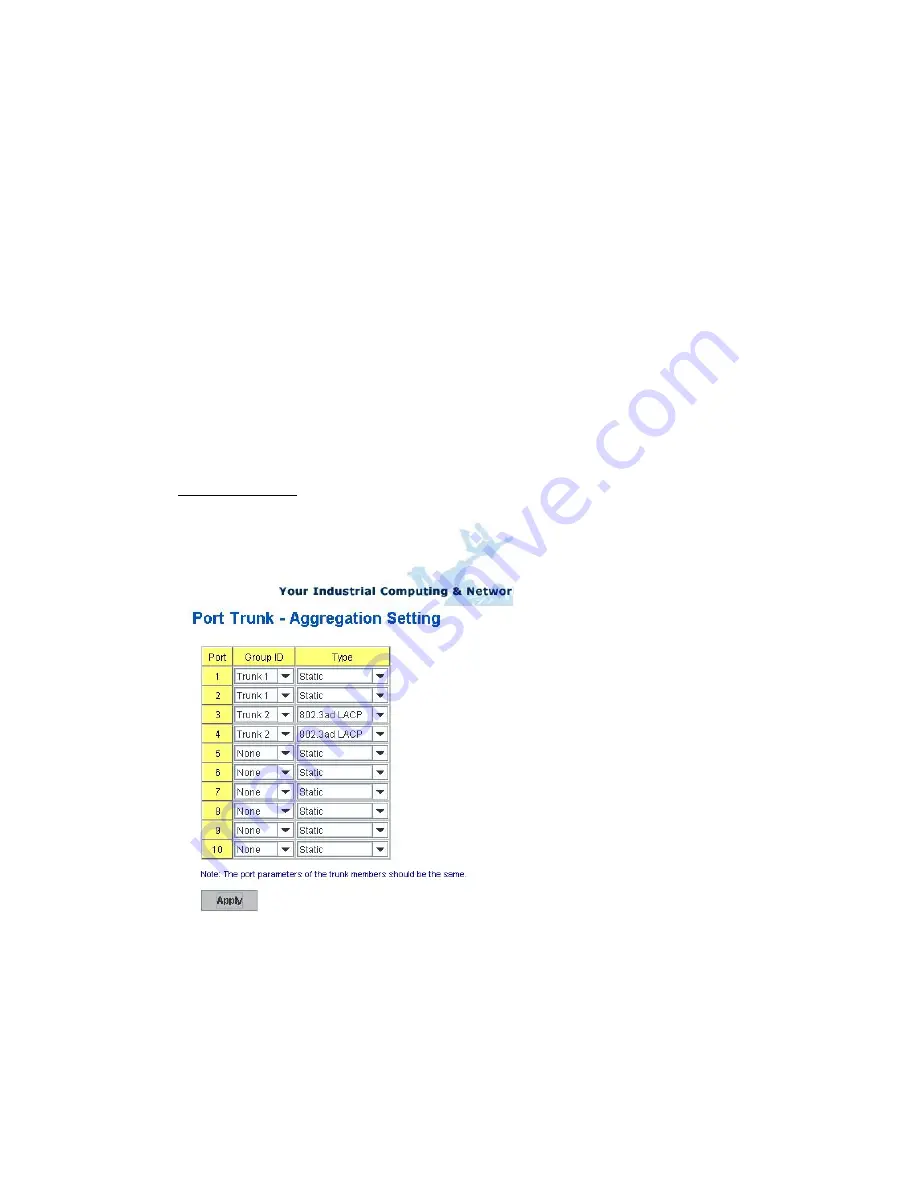
56
4.3.4 Port Trunking
Port Trunking configuration allows you to group multiple Ethernet ports in
parallel to increase link bandwidth. The aggregated ports can be viewed as
one physical port so that the bandwidth is higher than merely one single
Ethernet port. The member ports of the same trunk group can balance the
loading and backup for each other. Port Trunking feature is usually used
when you need higher bandwidth for backbone network. This is an
inexpensive way for you to transfer more data.
There are some different descriptions for the port trunking. Different
manufacturers may use different descriptions for their products, like Link
Aggregation Group (LAG), Link Aggregation Control Protocol, Ethernet
Trunk, Ether Channel…etc. Most of the implementations now conform to
IEEE standard, 802.3ad.
The aggregated ports can interconnect to the other switch which also
supports Port Trunking. Korenix Supports 2 types of port trunking. One is
Static Trunk, the other is 802.3ad. When the other end uses 802.3ad LACP,
you
should
assign 802.3ad LACP to the trunk. When the other end uses
non-802.3ad, you can then use Static Trunk.
There are 2 configuration pages, Aggregation Setting and Aggregation
Status.
Aggregation Setting
Trunk Size:
The switch can support up to 8 trunk groups with 2 trunk


